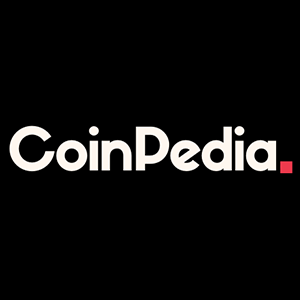Crypto Market Structure: Senator Lummis’s Pivotal Push for Regulatory Clarity
5 min read
BitcoinWorld Crypto Market Structure: Senator Lummis’s Pivotal Push for Regulatory Clarity The cryptocurrency world is abuzz with anticipation following a significant announcement from Capitol Hill. U.S. Senator Cynthia Lummis, a vocal proponent of responsible digital asset integration, has indicated that a draft bill addressing crypto market structure is on the horizon, aiming for release before the crucial August recess. This development, shared by Crypto in America host Eleanor Terrett, signals a pivotal moment for an industry long yearning for regulatory certainty in the United States. For anyone invested in the future of digital finance, this legislative push represents a beacon of hope for clearer guidelines and a more robust operational environment. Senator Lummis’s Vision: A Clear Path for Digital Assets Senator Lummis has consistently championed a balanced approach to digital assets, advocating for frameworks that foster innovation while protecting consumers. Her latest announcement suggests that the Senate is moving with purpose to define the rules of engagement for cryptocurrencies and related technologies. The timeline is ambitious: a draft bill expected within weeks, with markup discussions — the process of amending and refining legislation — slated for September. This proactive stance by Senator Lummis is seen by many as a necessary step to bring the U.S. up to speed with other global jurisdictions that have already begun to establish comprehensive regulatory regimes. Her vision centers on creating an environment where the benefits of blockchain technology can be fully realized without stifling growth through ambiguity or overly burdensome rules. Why a US Crypto Bill is Crucial for Industry Growth The absence of a clear and comprehensive US crypto bill has been a significant impediment to the growth and maturation of the digital asset industry within the United States. Currently, companies navigate a patchwork of state-level regulations and federal agency interpretations, leading to confusion, inefficiency, and sometimes, outright conflict. The benefits of a well-crafted federal bill are numerous: Regulatory Certainty: Businesses would have a clear understanding of what constitutes a security versus a commodity, how digital assets should be custodied, and what compliance measures are required. This clarity reduces legal risks and encourages investment. Enhanced Consumer Protection: A unified framework can establish robust safeguards for investors, addressing issues like fraud, market manipulation, and the responsible handling of customer funds. Fostering Domestic Innovation: By providing clear rules, the U.S. can attract and retain blockchain talent and companies, preventing the exodus of innovation to more crypto-friendly jurisdictions. Increased Institutional Adoption: Major financial institutions often hesitate to fully engage with crypto due to regulatory uncertainty. A clear bill could unlock significant institutional capital. Global Competitiveness: The U.S. risks falling behind if it doesn’t establish a coherent regulatory stance, potentially losing its leadership position in the evolving global financial landscape. The current challenges, including ongoing enforcement actions and conflicting statements from various regulatory bodies, underscore the urgent need for legislative action. Shaping the Digital Asset Regulation Landscape What key elements can we expect from this proposed digital asset regulation ? While details of the new draft remain under wraps, previous legislative efforts and public statements from policymakers offer clues. It’s highly probable that the bill will attempt to delineate the jurisdictional boundaries between the Securities and Exchange Commission (SEC) and the Commodity Futures Trading Commission (CFTC) regarding various types of digital assets. This distinction is critical, as it determines which regulatory body has oversight and what rules apply. Other potential areas of focus include: Stablecoin Frameworks: Establishing clear rules for stablecoin issuers, addressing reserves, redemption mechanisms, and auditing requirements. Decentralized Finance (DeFi) Oversight: How to approach the regulation of decentralized protocols without stifling their innovative, permissionless nature. Custody Rules: Guidelines for how exchanges and other entities hold customer digital assets. Taxation: Clarifying tax treatment for various crypto activities. The legislative process is often complex, involving extensive debate and compromise. However, the intent to create a comprehensive framework for digital asset regulation is clear, aiming to provide both guardrails for the industry and confidence for participants. Navigating the Complexities of Crypto Market Structure Defining the ideal crypto market structure for the U.S. is no simple feat. The digital asset ecosystem is dynamic, rapidly evolving, and presents unique challenges that traditional financial regulations may not fully address. One of the primary complexities lies in classifying digital assets. Is a token a security, a commodity, or something entirely new? The answer has profound implications for how it is traded, offered, and regulated. Furthermore, the global nature of cryptocurrencies adds another layer of complexity. How can U.S. regulations effectively govern a market that operates 24/7 across borders? Policymakers must also consider the delicate balance between robust oversight and fostering technological advancement. Overly stringent rules could stifle innovation, pushing developers and entrepreneurs offshore. Conversely, a lack of clear rules can lead to market instability and harm investors. This ongoing legislative effort reflects a deep engagement with these intricate issues, striving for a framework that is both effective and adaptable. Fostering Blockchain Innovation While Ensuring Safety At its core, the goal of any sensible regulation should be to foster blockchain innovation while simultaneously ensuring market integrity and investor protection. The U.S. has a long history of leading technological advancements, and a well-designed crypto framework could solidify its position as a hub for Web3 development. This involves creating a regulatory environment that understands the nuances of decentralized technologies, smart contracts, and tokenization. For instance, clear guidelines can help distinguish between legitimate projects and fraudulent schemes, thereby building trust in the broader ecosystem. It can also encourage the development of new applications in areas like supply chain management, digital identity, and tokenized real-world assets. The challenge lies in crafting rules that are technology-neutral, allowing for future innovations without requiring constant legislative updates. This balance is critical to ensuring that the U.S. remains competitive and continues to attract the best minds in the blockchain space, turning the promise of distributed ledger technology into tangible economic benefits for all. For individuals and businesses operating in this space, staying informed about these legislative developments is paramount. Engaging with industry associations and providing constructive feedback to policymakers can help shape a future where blockchain innovation thrives within a clear and secure regulatory landscape. Senator Lummis’s announcement marks a significant and highly anticipated step towards establishing a comprehensive regulatory framework for cryptocurrencies in the United States. The impending release of a draft bill on crypto market structure before the August recess, with markup discussions set for September, signals a determined effort to bring clarity and stability to an industry that has long operated under a cloud of uncertainty. While the path to finalized legislation may be complex, this initiative represents a pivotal moment for the digital asset space, promising a future where innovation can flourish within a well-defined and secure regulatory environment. The crypto community will be watching closely as these legislative efforts unfold, hopeful for a framework that supports growth, protects consumers, and solidifies the U.S.’s position at the forefront of the global digital economy. To learn more about the latest crypto market structure trends, explore our article on key developments shaping digital asset regulation and its future impact on blockchain innovation . This post Crypto Market Structure: Senator Lummis’s Pivotal Push for Regulatory Clarity first appeared on BitcoinWorld and is written by Editorial Team

Source: Bitcoin World



